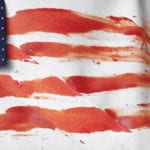 Weird Stuff
Weird Stuff  Weird Stuff
Weird Stuff  Our World
Our World 10 Ways Your Christmas Tree Is More Lit Than You Think
 Movies and TV
Movies and TV The 10 Coolest Stars to Set Sail on The Love Boat
 History
History 10 Things You Didn’t Know About the American National Anthem
 Technology
Technology Top 10 Everyday Tech Buzzwords That Hide a Darker Past
 Humans
Humans 10 Everyday Human Behaviors That Are Actually Survival Instincts
 Animals
Animals 10 Animals That Humiliated and Harmed Historical Leaders
 History
History 10 Most Influential Protests in Modern History
 Creepy
Creepy 10 More Representations of Death from Myth, Legend, and Folktale
 Technology
Technology 10 Scientific Breakthroughs of 2025 That’ll Change Everything
 Weird Stuff
Weird Stuff Ten Bizarre Facts About The Doge Meme
 Our World
Our World 10 Ways Your Christmas Tree Is More Lit Than You Think
 Movies and TV
Movies and TV The 10 Coolest Stars to Set Sail on The Love Boat
Who's Behind Listverse?

Jamie Frater
Head Editor
Jamie founded Listverse due to an insatiable desire to share fascinating, obscure, and bizarre facts. He has been a guest speaker on numerous national radio and television stations and is a five time published author.
More About Us History
History 10 Things You Didn’t Know About the American National Anthem
 Technology
Technology Top 10 Everyday Tech Buzzwords That Hide a Darker Past
 Humans
Humans 10 Everyday Human Behaviors That Are Actually Survival Instincts
 Animals
Animals 10 Animals That Humiliated and Harmed Historical Leaders
 History
History 10 Most Influential Protests in Modern History
 Creepy
Creepy 10 More Representations of Death from Myth, Legend, and Folktale
 Technology
Technology 10 Scientific Breakthroughs of 2025 That’ll Change Everything
Top 10 American Children Sentenced To Death
Though the US Supreme Court has argued that imposing the death penalty on those younger than 18 constitutes cruel and unusual punishment, the United States has a rich and colorful history regarding the execution of juveniles. The following ten are little-known cases regarding this contentious and disconcerting topic. At one point in US history, it seemed to be the routine form of justice.
10 Virginia Christian
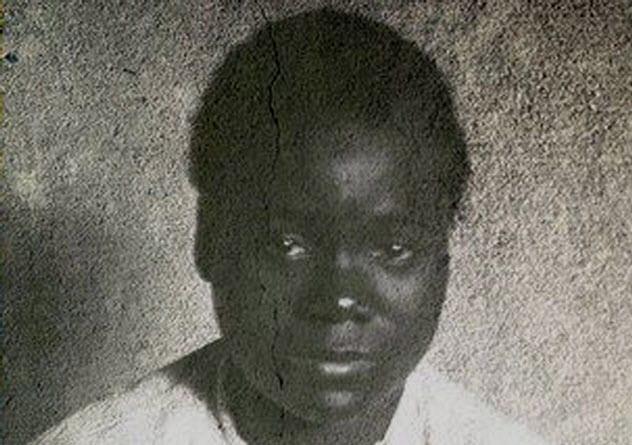
On the morning of August 16, 1912, Virginia Christian was sent to the electric chair for the murder of her employer, Ida Belote, after being accused of stealing a gold locket. Christian, the 16-year-old servant, would become the first and last woman to be executed in the state of Virginia.
It was during this time that Jim Crow legislation and racial purity laws were in effect, further creating antiblack sentiment. African Americans were depicted as subhuman savages, which is how Christian “The Negress” was portrayed in the newspapers.
Although she confessed to the murder, she was not afforded a fair trial. Virginia laws at the time disallowed the imprisonment and execution of offenders 17 or younger. However, no such exception existed for blacks.
Christian was not even allowed to take the stand in her own defense. There was fear that it would provoke violence like the case in Hillsville, Virginia, where five people were killed in a courtroom shoot-out. Christian’s trial was subsequently rushed to avoid mob violence, and she was sent to the electric chair a day after her 17th birthday.[1]
9 Plymouth Colony
1642
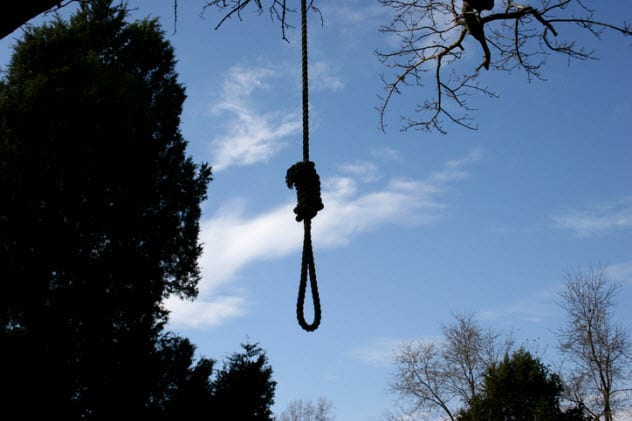
Plymouth Colony saw one the most bizarre cases of sexual offense in 1642 when Thomas Graunger, a Native American who was about 16 or 17, was found guilty of “buggery.” The actual crime committed was bestiality inflicted on a mare, a cow, two goats, five sheep, two calves, and a turkey. Graunger’s sick and twisted fetish only came to an end when an unsuspecting individual happened to walk in on the young man engaging in a lewd act with the mare.
Graunger confessed to the court about his romantic escapades with all 12 livestock. He was subsequently indicted and sentenced to hang. At his execution on September 8, 1642, “the mare and then the cow and the rest of the lesser cattle were killed before his face, according to the law, Leviticus xx. 15.”[2]
The animal carcasses were then thrown in a mass grave and buried in front of spectators. Immediately after the slaughter and burial of Graunger’s former lovers, he was brought to the gallows and hanged.
8 A History Of Violence

On July 2, 1977, Louisiana state trooper Donald Cleveland pulled over Dalton Prejean, 17, and his brother Joseph. While the officer attempted to frisk Joseph, Dalton crept up behind the trooper and shot him twice in the head.
At trial, a remorseful Dalton won the sympathy of countless supporters. They claimed that the black juvenile, who was convicted by an all-white jury, wasn’t afforded a fair trial. In addition, reports surfaced of Dalton being mentally challenged due to partial brain damage from years of child abuse.
Despite the arguments in Dalton Prejean’s defense, his murder of trooper Cleveland was not an isolated incident. In fact, Dalton had a history of violence, committing his first murder of a taxi driver when he was just 14.[3]
For that killing, he was sentenced to 30 months in a reform school. He would not be as lucky the second time around. For Cleveland’s murder, Dalton was condemned to die in the Louisiana electric chair in 1990.
7 Colonial Albany
1793
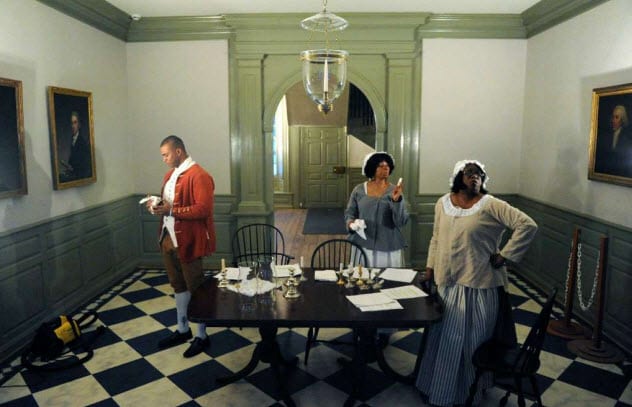
Just after midnight on November 17, 1793, a fire broke out at the mansion of Senator Leonard Gansevoort in colonial Albany, New York. Although no one perished in the flames, several blocks of buildings were destroyed along with 26 homes. This caused $250,000 of damage.
Slave owners in Albany were in a heightened state of paranoia given an uprising and arson spree in New York in addition to a bloody rebellion in Haiti in 1791. Thus, when a teenage male slave nicknamed “Pomp” (Pompey) was charged for intentionally starting the fire, his fate appeared especially dismal.
According to newspaper accounts in 1793, Pomp was approached by two white men who had a grudge against Senator Gansevoort. The young slave was offered a watch in exchange for igniting the fire. Pomp agreed, enlisting the help of two slave girls, Dinah and Bet, both under age 14.
Following their arrests, the two girls pleaded guilty while Pomp maintained his innocence. All three were convicted and sentenced to death. Governor DeWitt Clinton argued for stays of execution but to no avail.
The three teens were hanged in early 1794 amid a boisterous, drunken crowd. The two white men who approached Pomp were never identified nor was the matter investigated.[4]
6 Burned Alive

When Scott Hain was 17, he and Robert Wayne Lambert, 21, kidnapped Michael Houghton and Laura Sanders outside a Tulsa, Oklahoma, bar. After the two restaurant coworkers were robbed of $565, they were forced into the trunk of a car and burned alive.
Hain and Lambert returned to the scene hours later to examine their innocent victims’ charred remains. For their crime, the two merciless killers were sentenced to death.
As Hain was 17 at the time of the murders, the case drew international attention, with harsh criticism surrounding his sentence. Sixteen years after the double homicide, Hain was executed hours after the US Supreme Court overturned his last request for a stay of execution.
Until his death, Hain maintained his innocence based on the fact that he was a minor and under Lambert’s control. Lambert, who currently sits on death row, has sought to have his death sentence vacated, citing the ruling of the Supreme Court banning the execution of the mentally retarded.[5]
5 Leonard Shockley
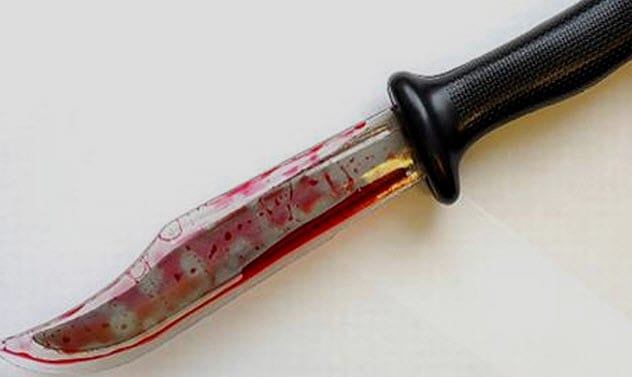
On the afternoon of January 16, 1958, Leonard Shockley, 16, and his brother Harold, 22, found themselves cash-strapped and eager to make a quick buck in Boxiron, Maryland. The two decided to rob a local general store, which was owned and operated by 39-year-old Sarah Hearne, because they believed that she would most likely be alone.
Their assumption was correct. Upon entering the store, the brothers began a vicious attack on the helpless mother of three. Without warning, Leonard plunged a large hunting knife into the back of the woman he had come to know throughout the years. He stabbed her repeatedly before slashing her throat.[6]
Moments later, customer Clarence Bishop arrived, only to flee in horror. Bishop, a well-respected African American in the community, provided a description of the Shockleys and their vehicle. Although the brothers were black, the police received the best leads from the black community, who felt profound resentment toward the murderers of a white woman they had come to respect.
In the end, Harold was sentenced to life in prison. However, Leonard found himself sitting in a Maryland gas chamber on April 10, 1959. It would be 40 years until the United States executed another inmate for a murder committed at age 16.
4 Sean Sellers

Forty years after Leonard Shockley’s execution, Sean Sellers was put to death for multiple murders committed at age 16. Sellers, a former Satan worshiper who used to drink his own blood during satanic rituals, murdered a convenience store clerk simply to see “what it felt like.”
Six months later, Sellers—dressed only in black underwear—shot his parents as they slept. This would be the crime that landed the 16-year-old on death row, sparking an international outcry for clemency. Media outlets from England, France, Germany, and more arrived in Oklahoma to report on the execution while high-profile figures such as Archbishop Emeritus Desmond Tutu of South Africa pleaded for leniency.
The opposition asked the courts to spare Sellers’s life due to his young age at the time of the murders and a psychiatrist’s diagnosis that Sellers had multiple personality disorder. Nonetheless, all arguments fell on the governor’s deaf ears. After dining on Chinese food as his last meal, Sellers, the now born-again Christian, was executed by lethal injection on February 4, 1999.[7]
3 James Terry Roach

In October 1977, Tommy Taylor, 17, and Carlotta Hartness, 14, were sitting in a parked car not far from their South Carolina high school when they were ambushed by two men. Taylor was shot in the face while Hartness was brought to the woods where she was raped, shot, and mutilated. Despite casting blame on one another, James Terry Roach, 17, and Joseph Carl Shaw, 22, were both found guilty of first-degree murder and sentenced to die in the electric chair.
Roach’s attorney argued against the death sentence by citing his client’s age and the fact that Roach had Huntington’s chorea, a mentally debilitating genetic disease. Former President Jimmy Carter and Mother Teresa even called for a halt to the execution. Meanwhile, Ted Koppel granted Roach an interview during which the juvenile described his sentence as “mean and cruel.”[8]
In the end, South Carolina Governor Richard W. Riley refused the pleas of leniency. Thus, Roach received two electrical surges in January 1986. His accomplice, Shaw, had been executed the previous year.
2 The Prison Gallows
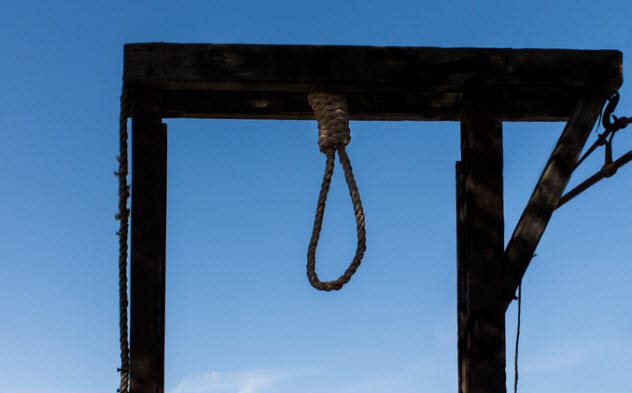
On June 14, 1915, 13-year-old Joe Persons of Butts County, Georgia, raped and murdered an eight-year-old girl whose name had been withheld from the papers. The crime was reported as being so heinous that the young boy’s father even petitioned for his son to hang.
In accordance with legal procedure at Jackson, Persons was led from his cell to the prison courtyard where the gallows awaited. Newspaper archives dated September 26, 1915, stated that the “immature and underdeveloped” Persons weighed only 29 kilograms (65 lb) and that local officials debated adding weights to his body to ensure a successful execution.
The events that followed are unclear other than the fact that Persons paid with his life that ominous fall day.[9]
1 10-Year-Old Murderer
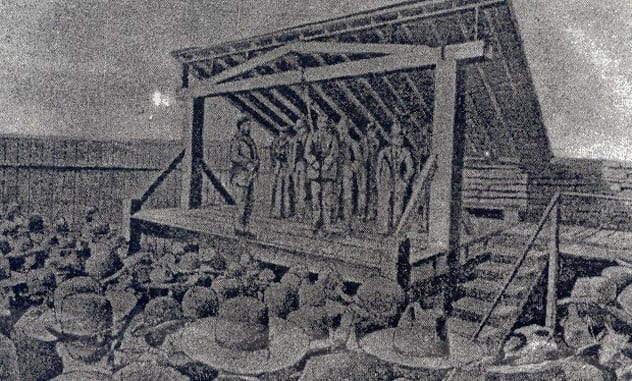
On November 25, 1872, Swedish-born immigrant William Feigel set out in the direction of Fort Gibson, Oklahoma, passing through Tahlequah, the Cherokee Nation‘s capital, along the way. The following day, his battered remains were discovered along a dirt road. His boots, hat, coat, and shirt were missing as well as any money he may have had in his possession.
Given the fact that Feigel was a foreigner with no family living in the United States, his body went unclaimed and the murder remained a mystery until 1884 when Deputy Marshal Andrews reopened the case. After securing enough evidence, Andrews obtained a warrant for the arrests of James Arcene and William Parchmeal.[10]
Arcene, a Native American who was only 10 at the time of the murder, confessed that he had shot and bludgeoned Feigel after being recruited by Parchmeal, who was the mastermind of the robbery and murder. The two, who only got 25 cents for their atrocious deed, were ultimately sentenced to hang on June 26, 1885.
Despite the fact that Arcene was executed at the Fort Smith gallows as an adult, he remained the youngest offender sentenced to death in the United States for the crime committed 13 years earlier.
Adam is just a hubcap trying to hold on in the fast lane.
Read more about the cruel ways that children were treated by people in power on 10 Armies That Sent Children Into Battle and 10 Ways Scientists Messed With Children’s Minds.






